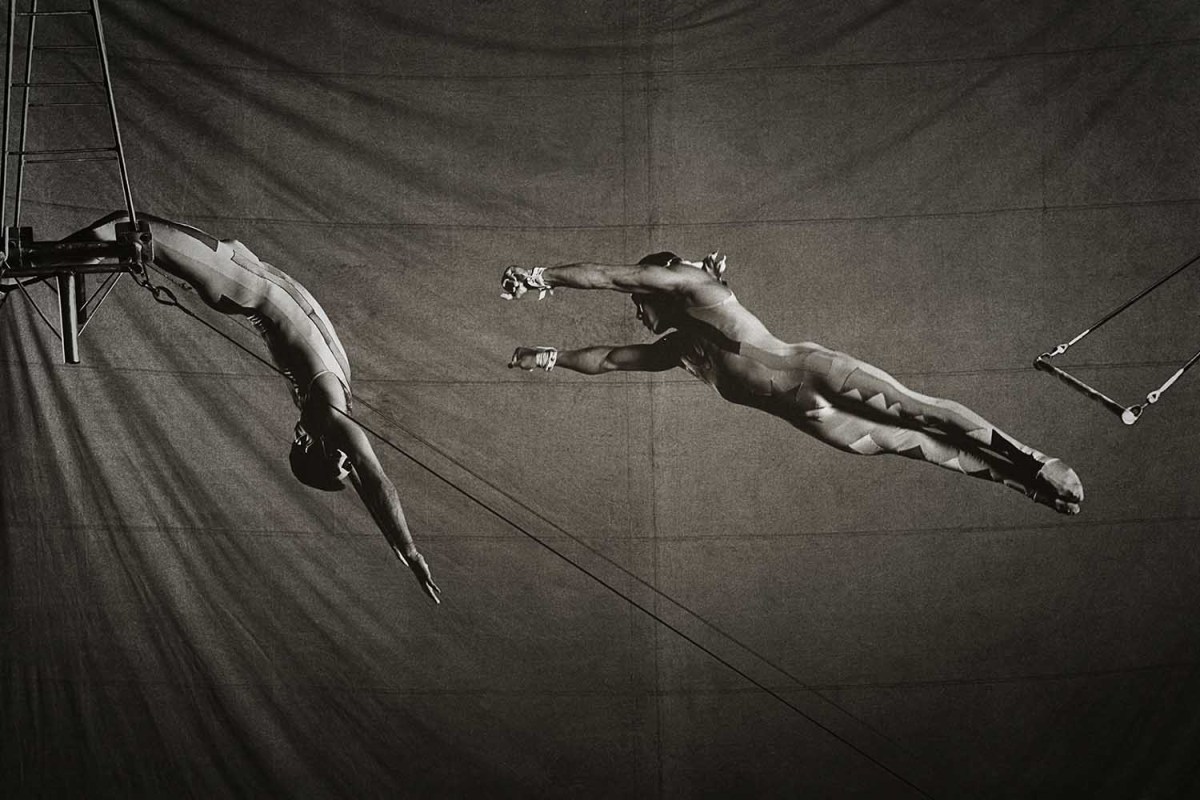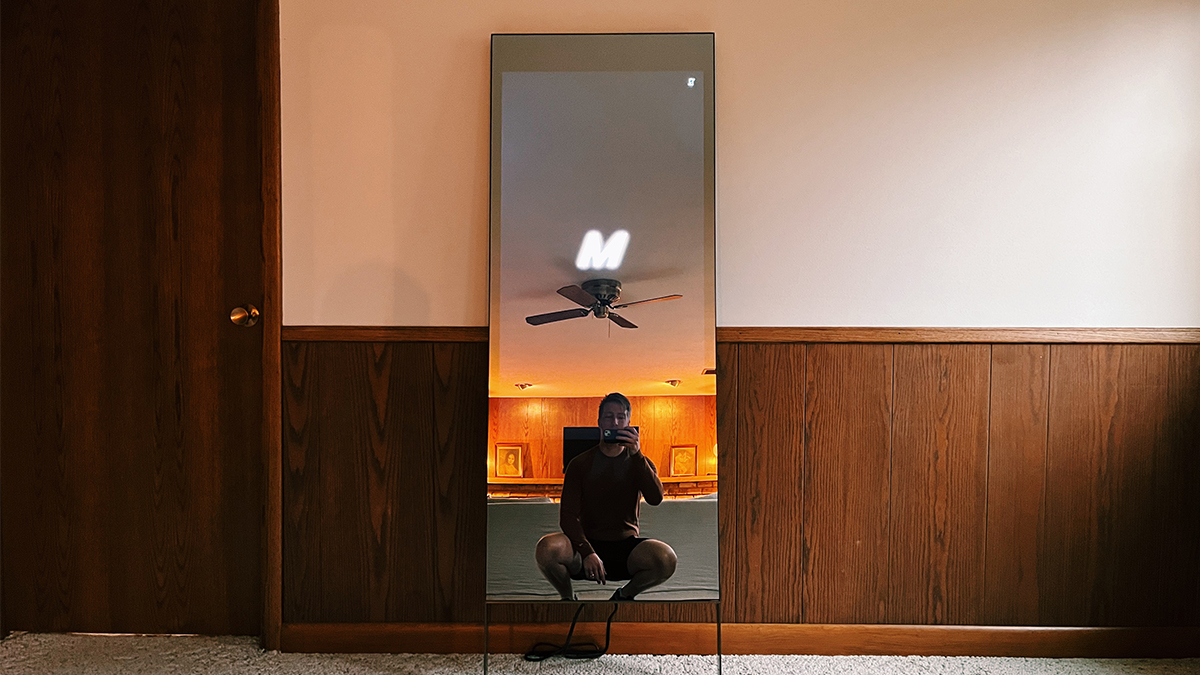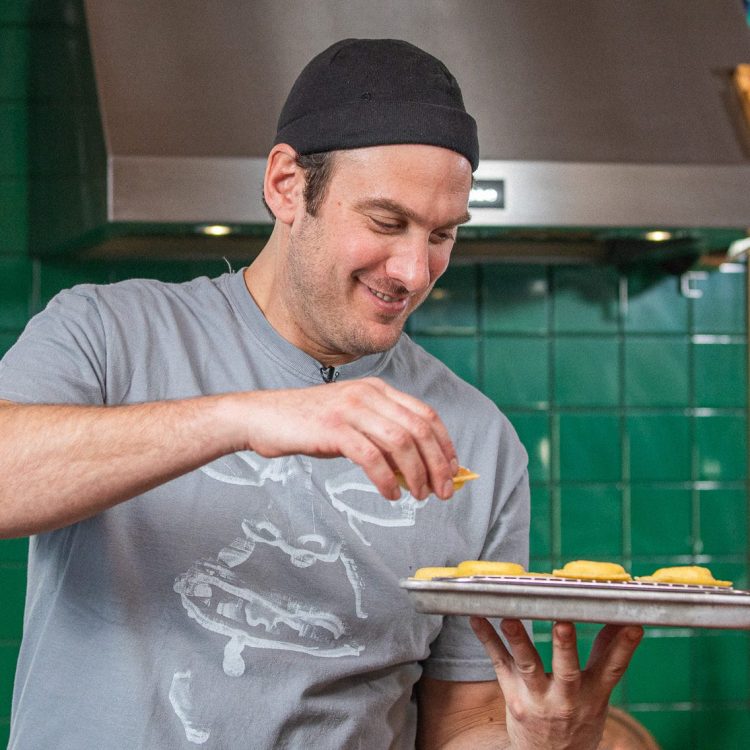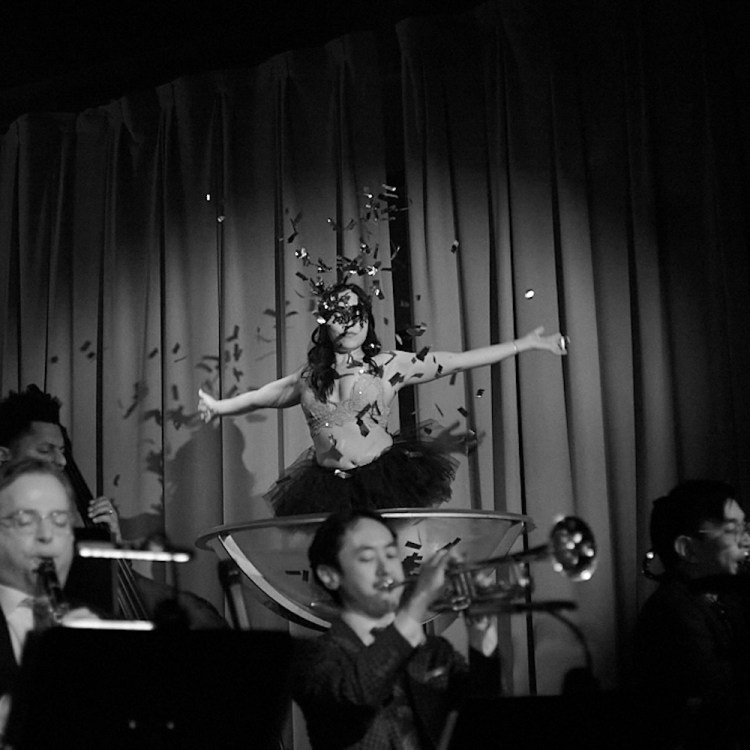The biggest mistake I made before my two-hour flying trapeze class at Trapeze School New York (TSNY) three weeks ago was taking a HIIT class that same morning. I have (shockingly) never taken a trapeze class before, and underestimated the physical toll hanging from a bar and flipping in the air could take on the body. After the acrobatic class, our instructor led us through some stretches, warned us we’d be feeling it tomorrow and encouraged us to stretch again before bed. “You’re going to be sore in places you didn’t know could be sore.” He was correct. For about a week after, I was a bit bruised and my body was hurtin.’ Though, I felt like I got a good workout, exercised my brain and most importantly, had an immeasurable amount of fun.
TSNY offers trapeze and other aerial arts classes at an indoor facility in Williamsburg, Brooklyn year-round and at an outdoor location at Pier 40 at Hudson River Park beginning in April (the company also has locations in Los Angeles, Chicago and D.C.). Most of their flying trapeze classes follow a similar structure that centers around accomplishing a specific trick Yiannis Psaroudis, a rig instructor at TSNY and the school’s social media manager, tells InsideHook.
Before you climb up a very tall ladder and leap off a two-story platform in the introductory class, instructors lay out safety guidelines, explain some circus terminology and introduce you to a basic trick — the knee hang — on the ground. The goal is to hook the back of your legs up on the trapeze bar, let your hands go and stretch your arms behind you — all while swinging in the air. An instructor demos the trick but it’s quickly your turn.
“We try to get you flying within 15 or so minutes of your class beginning,” says Psaroudis.
While that all sounds daunting, instructors carefully walk you through every step of the process. And if you’re worried about severely injuring yourself, don’t — students are connected to safety lines, plus there’s a big, bouncy net to catch you if you face plant (something I can attest to). You also don’t have to fret over your (potential) lack of upper body strength. Of course, the activity requires you to hold your body weight up on a bar (and by the end of the class your arms may feel like spaghetti), but as Psaroudis notes, it’s really only for a short amount of time.
“We do like to say that trapeze is for everybody. People will often say, ‘Oh, I’m not strong enough.’ But surprisingly, it’s not about upper body strength. You really only have to be able to hold onto a bar and support your own bodyweight for about 15 seconds. As a matter of fact, we often have to warn the men to not do a pull-up on the bar. Because as soon as they jump off, they want to do a pull-up, and it’s not about that,” he explains.
Though, as my sore arms, pecs and the back of my knees can certify, there are physical benefits to taking a flying trapeze class or another type of acrobatics class, like ariel yoga.
“One of the best benefits of trapeze workouts is they can provide a deeper stretch than other workouts. Being suspended by a platform or silks, especially upside down, allows you to decompress the spine and relieve tension in the back and neck,” explains Matt Scarfo, a NASM-certified personal trainer.
“One of the best aspects of trapeze workouts is that they can challenge your body in unique ways. Unless someone is specifically training their upper body, they’re unlikely to do pull-ups or lat pulldowns every day in their routine,” he adds. “However, aerial yoga and trapeze workouts provide an excellent stimulus for the upper body, helping you build these muscle systems. The lats, shoulders and rhomboids are essential in helping maintain good posture, so these workouts can actually help individuals prevent or manage neck pain.” You also can get a great grip-strength workout.
“Because you need to hang from the trapeze, this can help someone build the muscles in their hands and forearms, which can bring more strength, stability and endurance to your hands and fingers.”
Interestingly though, the nonphysical benefits of taking one of these classes might outweigh the physical ones, since flying trapeze is more like a well-known children’s game than a show of athleticism.
“[Trapeze] is more of a game of Simon Says, where all of your instructions are given at a particular point in time at the front of the swing and the back of the swing because there’s a moment of weightlessness there. If you listen and do things when your instructors are telling you to, you’re not fighting gravity, and it’s a lot easier,” says Psaroudis. “We take ages six and up. Our owner is in his 70s, I’m in my 50s. So it really is something that anybody can do.”
And since listening, focusing and following commands are the keys to successfully landing that trick, you’re giving your brain a nice little workout as well, says Seamus Sullivan, a Certified Strength and Conditioning Specialist.
“One will see lots of neurological and brain benefits [of trapeze]. One is learning a new skill that is creating new neural pathways. Another is learning coordination and proprioception of their body in a more extreme movement pattern. Lastly, a person is giving their brain a novel stimulus which always helps with memory, focus and attention.”
Though, I’d argue the real reason you should consider taking a flying trapeze is that it’s simple, unadulterated fun. Hanging upside down on the bar and swinging in the air felt oddly familiar. Again, I have never in my life done trapeze but as a child, I did hang upside down from monkey bars and fly on swingsets. As adults, it can be difficult to engage in physical activity we find exciting and enjoyable. Flying trapeze was the first time in a while I felt like I was exploring something new and exhilarating. Not to mention the feeling of accomplishment that washes over you after you nail a trick or simply, gather the confidence to jump off a 23-foot platform.
“Seeing somebody overcome a fear that they thought that they had, or that they do have, is really rewarding,” says Psaroudis, noting that lots of participants come to TSNY to face their fear of heights. “And we try to instill in them that you can take that into other aspects of your life. If you can do this, what else can you do that you thought that you couldn’t?”
This article was featured in the InsideHook NY newsletter. Sign up now for more from all five boroughs.























